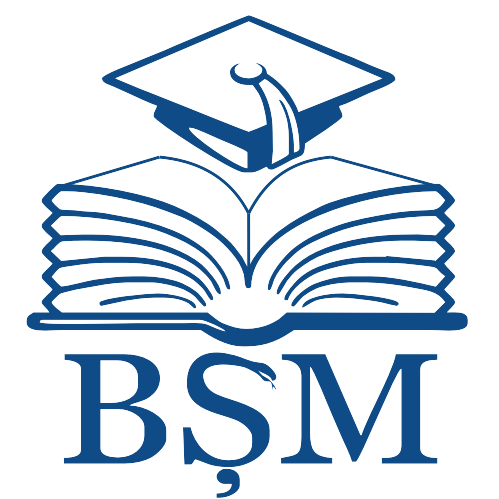| DC Field | Value | Language |
|---|
| dc.contributor.author | Cojoc, Daniela | |
| dc.contributor.author | Sardari, Veronica | |
| dc.contributor.author | Munteanu, Roman | |
| dc.contributor.author | Stratulat, Silvia | |
| dc.contributor.author | Pantea, Valeriana | |
| dc.contributor.author | Tagadiuc, Olga | |
| dc.date.accessioned | 2025-04-18T14:17:33Z | |
| dc.date.available | 2025-04-18T14:17:33Z | |
| dc.date.issued | 2025 | |
| dc.identifier.citation | COJOC, Daniela; Veronica SARDARI; Roman MUNTEANU; Silvia STRATULAT; Valeriana PANTEA and Olga TAGADIUC. The influence of calcitriol on the Warburg efect in cancer. In: Cells and tissues transplantation. Actualities and perspectives. The 3rd edition : The Materials of the National Scientific Conference with international participation dedicated to the 80th anniversary of the founding of Nicolae Testemitanu State University of Medicine and Pharmacy. Chisinau, March 21-22, 2025: [abstracts]. Chişinău: CEP Medicina, 2025, p. 82. ISBN 978-9975-82-413-2. | en_US |
| dc.identifier.isbn | 978-9975-82-413-2 | |
| dc.identifier.uri | https://repository.usmf.md/handle/20.500.12710/30389 | |
| dc.description.abstract | Background. Cancer cells undergo changes in the tumorigenic process through the Warburg effect,
also known as aerobic gligolysis. The Warburg effect ensures the conversion of glucose to pyruvate
and subsequently to lactate by lactate dehydrogenase A (LDH A), leading to increased tumor
microenvironment (TME) acidity (pH 6.0–6.5), which affects macrophage reprogramming and T cell
functionality.
Objective of the study. To elucidate the mechanism of suppression of the Warburg effect by the
biologically active form of vitamin D, calcitriol (1,25-dihydroxyvitamin D3).
Materials and methods. A review of the literature from 2019-2024 was performed, using 10
articles, including data from PubMed, Experimental and Molecular Medicine, Wiley Online Library,
MDPI, Journal of Cancer Research.
Results. Physiologically, glucose metabolism occurs in mitochondria through oxidative
phosphorylation in the presence of oxygen. Although the mitochondrial respiratory chain remains
functional, cancer cells adopt the Warburg effect, excessively consuming glucose and converting it
into lactate. Lactate is then transported to the TME by monocarboxylate transporters (MCTs) to
supply energy to cancer-associated fibroblasts (CAFs) and stromal cells. Oxidative phosphorylation
produces more energy than anaerobic glycolysis, but cancer cells compensate by increasing glucose
uptake and accelerating glycolysis. Glycolytic enzymes are regulated by the phosphatidylinositol 3-
kinase/protein kinase B (PI3K/AKT) signaling pathway through hexokinase 2 (HK2), which
phosphorylates glucose. Consequently, cancer cells disrupt the normal function of these proteins.
Vitamin D is a hormone responsible not only for calcium and phosphorus homeostasis, but also for
extraskeletal functions. Its biological effects are mediated by the vitamin D receptor (VDR). Recent
studies indicate that calcitriol inhibits key glycolytic enzymes of the Warburg effect, including HK2,
LDHA, and glucose transporter GLUT1 reducing lactate production and tumor microenvironment
acidity. In addition, calcitriol reduces TME acidification and increases the rate of oxygen
consumption in cancer cells by altering aerobic glycolysis at the mitochondrial respiratory chain,
thereby decreasing tumor volume and weight.
Conclusions. Cancer progression can be interrupted by calcitriol, which reduces cell proliferation,
stimulates apoptosis and cell differentiation and has a protective role. According to studies, calcitriol
inhibits cancer cell progression and has potential chemopreventive and anticancer capacity. | en_US |
| dc.language.iso | en | en_US |
| dc.publisher | CEP Medicina | en_US |
| dc.relation.ispartof | Cells and tissues transplantation. Actualities and perspectives. The 3-rd edition. Chisinau, March 21-22, 2025 | en_US |
| dc.subject | cancer | en_US |
| dc.subject | Warburg effect | en_US |
| dc.subject | glycolytic enzymes | en_US |
| dc.subject | glycolysis | en_US |
| dc.subject | calcitriol | en_US |
| dc.title | The influence of calcitriol on the Warburg efect in cancer | en_US |
| dc.type | Other | en_US |
| Appears in Collections: | The Materials of the National Scientific Conference with International Participation „Cells and tissues transplantation. Actualities and perspectives. The 3rd edition” dedicated to the 80th anniversary of the founding of Nicolae Testemitanu State University of Medicine and Pharmacy. Chisinau, March 21-22, 2025: [Abstracts]
|


